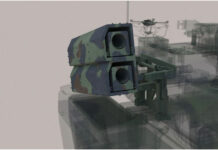Portable Electrical Power
Battery Supplies and Logistics Lessons Learned in Operation Iraqi Freedom 2003
Battery shortage limited US military operations and caused changes to combat plans. Army is now seeking more funding for batteries and better planning its supplies.
The shortage, caused by supplies depleted by many years of insufficient funding, first surfaced when Central Command’s maintenance branch began packing supplies for an anticipated war with Iraq. Batteries as other supplies, were sent by ship on a two week voyage. More vital cargo, such as fuel, was sent by Air Force cargo planes. When combat operations started earlier than planned, batteries were rushed to the theater, loaded onto Air Force cargo planes. Eventually, 95 percent of the BA 5590s were flown into Kuwait. Delivering batteries to forward units, over the long supply lines, was another challenge. In fact, until U.S. forces secured forward airfields near Baghdad, Kirkuk and Umm Qasr, there were no safe means of deliveries to forward troops. Forces landed in Northern Iraq and East of Baghdad received their supplies directly from Germany.
Due to the shortage in primary batteries, troops were instructed to use rechargeable batteries, previously used only for training. To support the operations, units would have to forward deploy a battery charging van but none was actually used operationally during the war. The Army is looking at alternative power sources, for example, small and flexible solar panels that could be folded and stored in a soldier’s rucksack. In desert conditions, solar panels can be used to recharge batteries or even run radios.
Combat lessons in Iraq have demonstrated the importance of users understanding that batteries are not made equal. Different types and capacities can provide extended usage. Furthermore, reliable power reading of fresh and used batteries. Lithium batteries power many systems, including the radio communications equipment (PRC-119), the Javelin missile command and guidance system, rugged portable computers, navigation systems, Chemical, Biological and Radiological (CBR) sensors, Satellite Communications equipment, night vision equipment, weapons sights and target acquisition systems, and the command and guidance unit of the. The most common battery is the BA 5590, which was also in the shortest supply. This battery is based on the Li/SO2 chemistry, in use the US Military in communications applications over the past 10 – 15 years, as it was the only lithium technology currently available that has a proven successful record in combat situations.
With a nominal 200 mA drain in typical use, the battery could provide 28 hours of operation at the minimum temperature. In ordinary combat usage, the soldiers are instructed to change them before 24 hours of operation are experienced. New BA 5390 (Li/MnO2) cylindrical cell version of this battery has a capacity of approximately 10 Ah. (The capacity of a Li/MnO2 pouch version, which utilizes the full volume of the battery case, can be as high as 12 Ah – almost doubling the life of primary batteries). However, US troops are using a different battery for training. The BB2590 Lithium-ion battery is rated at 5.6Ah. Soldiers get used to carry four or five batteries to sustain a 24 hour combat training cycle – the equivalent of one primary BA5590. Lithium-ion cells also have integral capacity gauges so State of Charge (SoC) of each battery was clearly presented to the user. When they prepared for combat, soldiers were instructed not to take any chances, and change the BA5590s at four hour intervals, therefore quadrupling supply requirements. If the soldiers training followed “train as you fight”, such precautions wouldn’t be necessary as they would have better confidence in their equipment.
The scramble to find batteries and get them to troops fighting in Operation Iraqi Freedom is leading to a policy review of non-rechargeable batteries, as well as an examination of alternative power sources, such as fuel cells and solar panels.



















